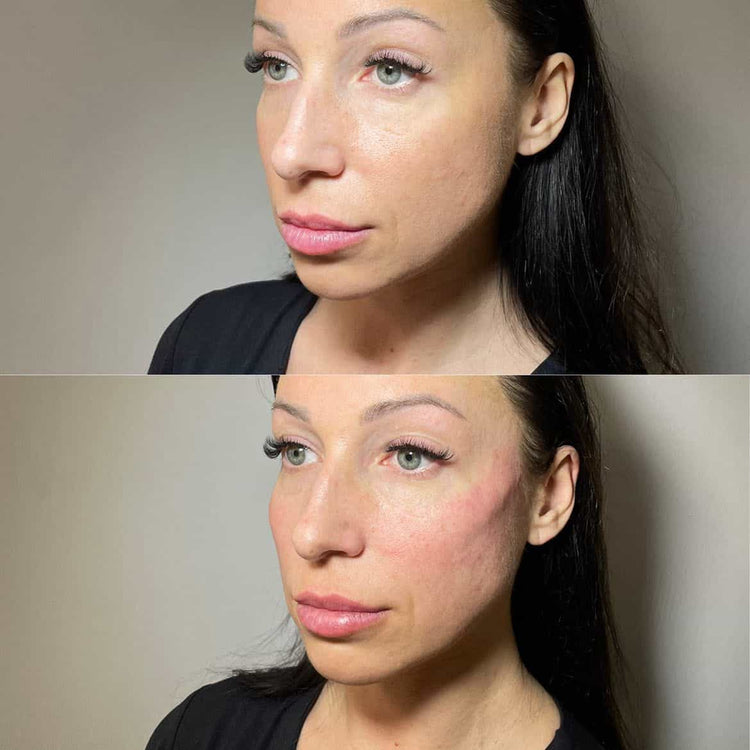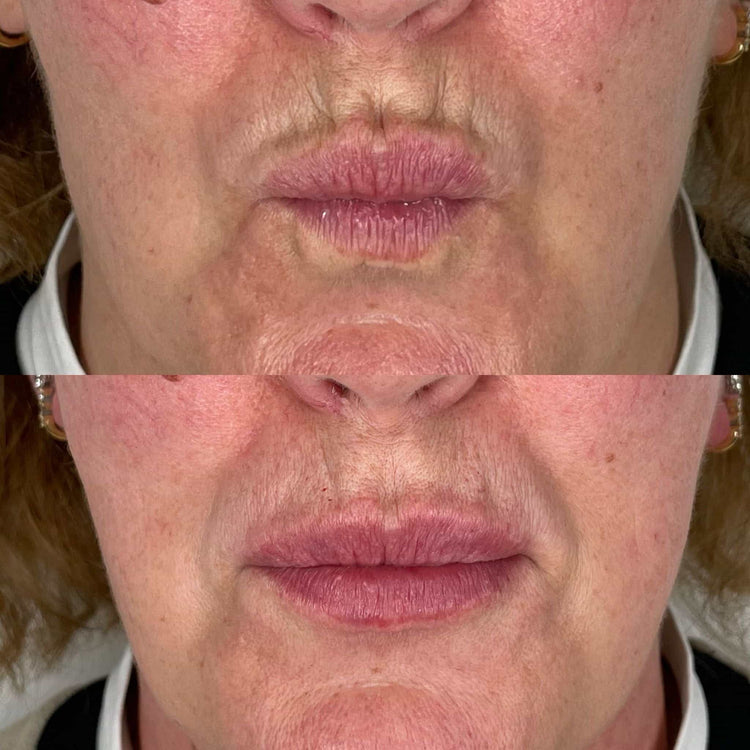Is Getting Dermal Fillers Safe In The UK? Expert Insights
May 25, 2025
Dermal Fillers: Safety Considerations in the UK
Dermal fillers have become increasingly popular for addressing facial concerns like wrinkles, volume loss, and lip enhancement. While generally safe when administered by qualified professionals, it’s essential to understand potential risks and safety considerations associated with dermal filler treatments in the UK.
Regulatory Framework and Standards
Dermal fillers have become increasingly popular for addressing facial concerns like wrinkles, volume loss, and lip enhancement. While generally safe when administered by qualified professionals, it’s essential to understand potential risks and safety considerations associated with dermal filler treatments in the UK.
The UK has a robust regulatory framework in place to ensure the safety of cosmetic procedures, including dermal fillers. Products are rigorously tested and approved by regulatory bodies like the Medicines and Healthcare products Regulatory Agency (MHRA).
To minimize risks and ensure safe treatment:

- Choose a practitioner with extensive experience and qualifications in dermal filler treatments.
- Ensure the clinic uses FDA-approved or MHRA-licensed fillers.
- Have a thorough consultation to discuss your goals, medical history, and potential risks.
- Follow post-treatment instructions carefully to minimize swelling and bruising.
It’s important to be aware of potential side effects, which can range from mild (e.g., redness, swelling) to more serious complications (e.g., infection, allergic reactions).
While dermal fillers offer a minimally invasive way to enhance appearance, understanding the regulatory framework and safety considerations is crucial for making informed decisions about your cosmetic treatment.
Choosing a Qualified Practitioner
The UK has a robust regulatory framework in place to ensure the safety of cosmetic procedures, including dermal fillers. Products are rigorously tested and approved by regulatory bodies like the Medicines and Healthcare products Regulatory Agency (MHRA).
To minimize risks and ensure safe treatment:
- Choose a practitioner with extensive experience and qualifications in dermal filler treatments.
- Ensure the clinic uses FDA-approved or MHRA-licensed fillers.
- Have a thorough consultation to discuss your goals, medical history, and potential risks.
- Follow post-treatment instructions carefully to minimize swelling and bruising.
It’s important to be aware of potential side effects, which can range from mild (e.g., redness, swelling) to more serious complications (e.g., infection, allergic reactions).
While dermal fillers offer a minimally invasive way to enhance appearance, understanding the regulatory framework and safety considerations is crucial for making informed decisions about your cosmetic treatment.
Types of Dermal Fillers and Their Risks
Dermal fillers are substances injected into the skin to add volume, smooth wrinkles, or reshape facial features. The UK has a robust regulatory framework overseen by the Medicines and Healthcare products Regulatory Agency (MHRA), ensuring that dermal fillers used in cosmetic procedures meet safety standards.

There are various types of dermal fillers, each containing different ingredients. Hyaluronic acid is a popular choice as it’s naturally found in the skin and attracts moisture, adding volume and hydration. Other types include poly-L-lactic acid (PLLA), which stimulates collagen production for long-lasting results, and calcium hydroxylapatite, known for its volumizing properties.
While generally safe when administered by qualified professionals, potential risks associated with dermal fillers include temporary side effects like redness, swelling, bruising, and pain. In rare cases, more serious complications can occur, such as infection, allergic reactions, or uneven distribution of the filler.
Minimizing risks is paramount. Choosing a practitioner experienced in dermal fillers who uses MHRA-approved products is crucial. A thorough consultation to discuss your medical history, desired outcome, and potential risks is essential. Following post-treatment instructions carefully helps minimize swelling and bruising.
Understanding the types of dermal fillers available, their individual properties, and potential side effects empowers you to make informed decisions about your cosmetic treatment.
Potential Side Effects and Complications
Dermal fillers have become increasingly popular for addressing facial concerns like wrinkles, volume loss, and lip enhancement. While generally safe when administered by qualified professionals, it’s essential to understand potential risks and safety considerations associated with dermal filler treatments in the UK.
The UK has a robust regulatory framework in place to ensure the safety of cosmetic procedures, including dermal fillers. Products are rigorously tested and approved by regulatory bodies like the Medicines and Healthcare products Regulatory Agency (MHRA).
To minimize risks and ensure safe treatment:

- Choose a practitioner with extensive experience and qualifications in dermal filler treatments.
- Ensure the clinic uses FDA-approved or MHRA-licensed fillers.
- Have a thorough consultation to discuss your goals, medical history, and potential risks.
- Follow post-treatment instructions carefully to minimize swelling and bruising.
It’s important to be aware of potential side effects, which can range from mild (e.g., redness, swelling) to more serious complications (e.g., infection, allergic reactions).
While dermal fillers offer a minimally invasive way to enhance appearance, understanding the regulatory framework and safety considerations is crucial for making informed decisions about your cosmetic treatment.
Allergic Reactions and Sensitivity
Dermal filler treatments are popular in the UK for addressing various aesthetic concerns. However, potential risks and allergic reactions need careful consideration.
The UK has stringent regulations to ensure product safety. The Medicines and Healthcare products Regulatory Agency (MHRA) rigorously tests and approves dermal fillers used in cosmetic procedures. This regulatory framework aims to minimize risks associated with these treatments.
While generally safe, allergic reactions can occur. Individuals may experience sensitivity or adverse responses to certain filler ingredients. Thorough pre-treatment consultations are crucial for identifying potential allergies. A practitioner should review your medical history and perform patch tests if necessary to minimize the risk of allergic reactions.
It is essential to choose a qualified and experienced practitioner who uses MHRA-approved fillers and adheres to strict hygiene protocols. Following post-treatment instructions carefully can also help prevent complications and reduce the likelihood of allergic reactions or other adverse effects.
Long-Term Effects and Longevity
Dermal fillers have become increasingly popular in the UK for addressing facial concerns such as wrinkles, volume loss, and lip enhancement. While generally considered safe when administered by qualified professionals, it is crucial to be aware of potential risks and safety considerations associated with dermal filler treatments.
The UK has a robust regulatory framework overseen by the Medicines and Healthcare products Regulatory Agency (MHRA) that ensures the safety of cosmetic procedures, including dermal fillers. Products undergo rigorous testing and approval processes before being made available for use in cosmetic treatments.
To minimize risks and ensure safe treatment, it is essential to choose a practitioner with extensive experience and qualifications in dermal filler treatments.
Ensure that the clinic uses MHRA-approved or FDA-licensed fillers. A thorough consultation with the practitioner is crucial to discuss your goals, medical history, and potential risks involved.
Potential side effects of dermal fillers can range from mild, such as redness, swelling, bruising, and pain, which typically subside within a few days. In rare cases, more serious complications may occur, including infection, allergic reactions, or uneven distribution of the filler.
The longevity of dermal fillers varies depending on the type of filler used and individual factors such as skin elasticity and metabolism. Hyaluronic acid fillers, for example, typically last six to eighteen months, while longer-lasting options like PLLA can provide results for up to two years or more.
It’s important to note that repeated treatments may be required to maintain the desired aesthetic outcome. Regular consultations with your practitioner will help assess your progress and determine the optimal treatment plan.
Aftercare Instructions and Recommendations
Dermal fillers have become increasingly popular in the UK for addressing facial concerns like wrinkles, volume loss, and lip enhancement. While generally safe when administered by qualified professionals, it’s essential to understand potential risks and safety considerations associated with dermal filler treatments.
The UK has a robust regulatory framework in place to ensure the safety of cosmetic procedures, including dermal fillers. Products are rigorously tested and approved by regulatory bodies like the Medicines and Healthcare products Regulatory Agency (MHRA).
To minimize risks and ensure safe treatment:
- Choose a practitioner with extensive experience and qualifications in dermal filler treatments.
- Ensure the clinic uses FDA-approved or MHRA-licensed fillers.
- Have a thorough consultation to discuss your goals, medical history, and potential risks.
- Follow post-treatment instructions carefully to minimize swelling and bruising.
It’s important to be aware of potential side effects, which can range from mild (e.g., redness, swelling) to more serious complications (e.g., infection, allergic reactions).
While dermal fillers offer a minimally invasive way to enhance appearance, understanding the regulatory framework and safety considerations is crucial for making informed decisions about your cosmetic treatment.
Managing Expectations and Informed Consent
Before embarking on any cosmetic procedure, it’s crucial to have realistic expectations and provide fully informed consent. This involves a thorough understanding of the potential benefits, risks, and limitations associated with dermal filler treatments.
Realistic Results and Individual Variability
Managing expectations is essential when considering dermal fillers. Results vary between individuals based on factors like skin elasticity, desired outcome, and the type of filler used. Realistic expectations help avoid disappointment and ensure a positive experience.
Informed consent involves a detailed discussion with the practitioner about your goals, medical history, and any potential risks or side effects. It’s crucial to ask questions and ensure you fully understand the procedure before proceeding.
Individual variability plays a significant role in filler outcomes. What works well for one person may not produce the same results for another. This highlights the importance of personalized consultations where practitioners assess individual needs and tailor treatments accordingly.
Discussing Concerns and Potential Alternatives
Managing expectations is crucial when considering dermal fillers. Results vary between individuals based on factors like skin elasticity, desired outcome, and the type of filler used. Realistic expectations help avoid disappointment and ensure a positive experience.
Informed consent is paramount. This involves a detailed discussion with the practitioner about your goals, medical history, any concerns you might have, and potential risks or side effects. Asking questions and ensuring you fully understand the procedure before proceeding is essential for making an informed decision.
If you experience any adverse reactions or concerns after treatment, it’s important to contact your practitioner immediately. They can offer guidance on managing side effects or address any complications that may arise. Open communication with your practitioner throughout the process helps ensure a safe and satisfying outcome.
Discover how dermal fillers can enhance your appearance at It’s Me & You Clinic with Dr. Laura Geige
- Redensity 1 Skin Booster Treatments Near Kempton Park, Surrey - November 3, 2025
- Radiesse Liquid Facelift Near Wisley, Surrey - November 2, 2025
- Profhilo Treatment Near Ockham, Surrey - October 31, 2025
